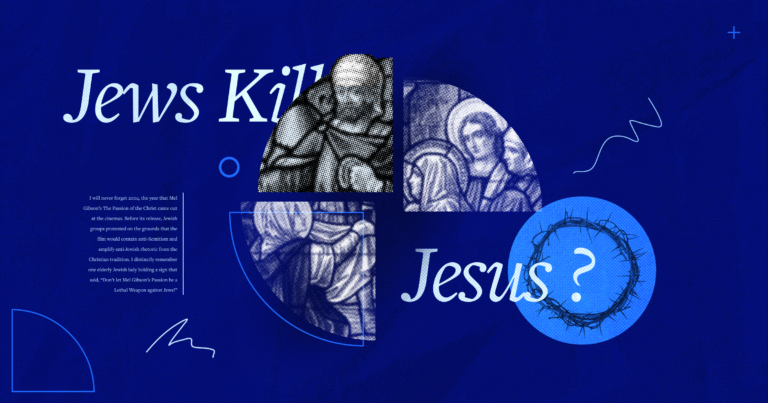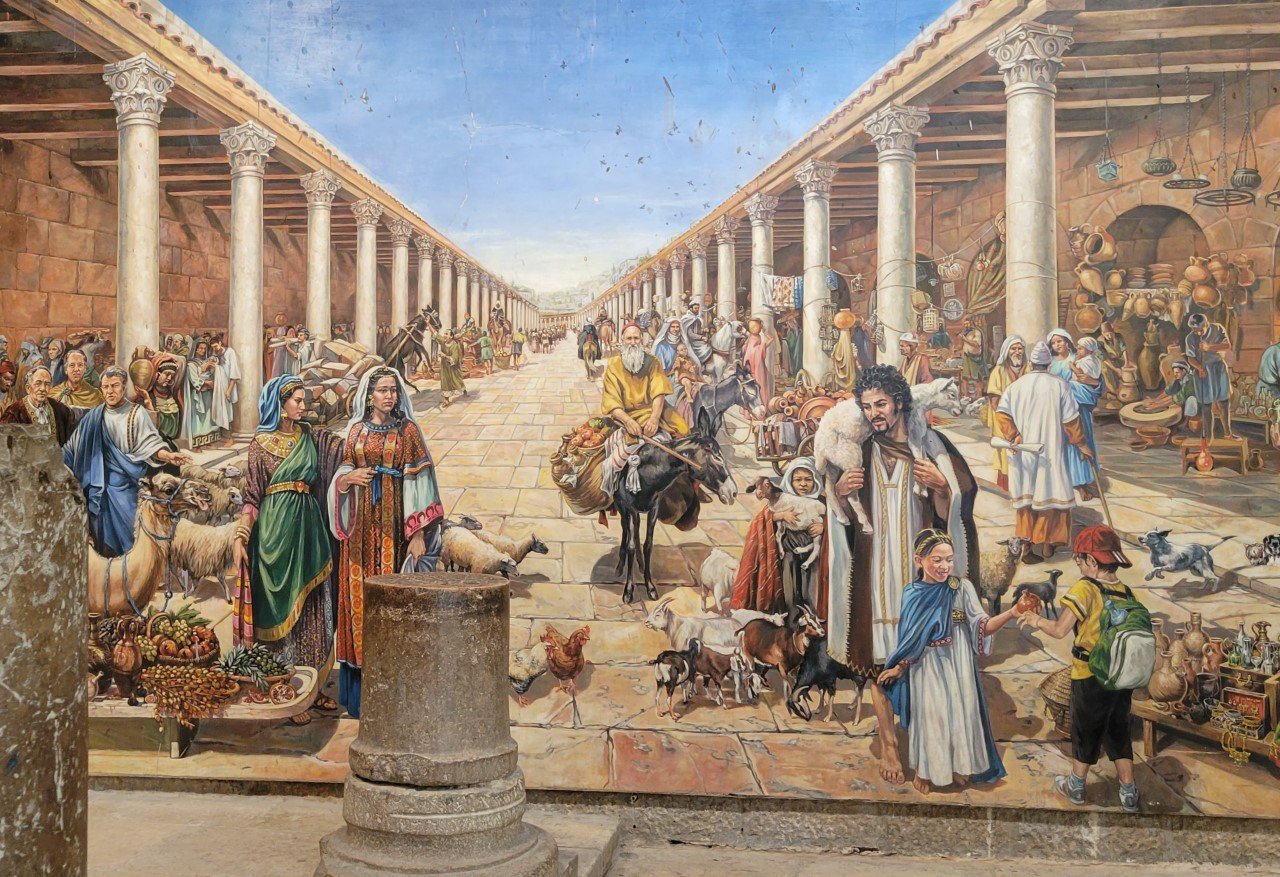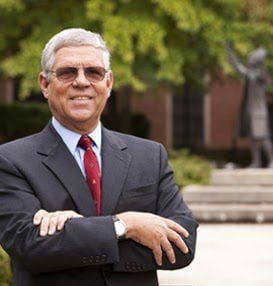
I will never forget 2004, the year when Mel Gibson’s The Passion of the Christ came out at the cinemas. Before its release, Jewish groups protested the film on the grounds that it would contain anti-Semitism and amplify anti-Jewish rhetoric from the Christian tradition. I distinctly remember one elderly Jewish lady holding a sign that said, “Don’t let Mel Gibson’s Passion be a Lethal Weapon against Jews!”
Under public pressure, Gibson did remove Matthew 27:25 from the script of his movie. However, The Passion still portrays the Jews of the time in a negative way. A scene where a small mob of Jewish children tease and attack Judas while turning into deformed and demonic delinquents became particularly notorious.
Controversy surrounded the film before and after its release. While many Christian leaders heralded the movie as an evangelistic opportunity, and its anti-Semitic reputation increased its popularity in the Arab world, the film remains disturbing in its portrayal of Jews. Gibson’s film certainly did nothing to improve Christian–Jewish relations nor to advance the gospel among Jewish communities.
Table of contents
The New Testament indictments for Jesus’s death
In short, retellings of the passion story from early church history through the medieval era to the modern era have told the story of Jesus’s arrest, trial, and crucifixion in such a way as to highlight the culpability of the Jews.
Admittedly, such a process had already begun in the New Testament. In the Gospels, the tendency is to mitigate the role of the Romans and to amplify the role of the high priests and the Jerusalem residents in Jesus’s crucifixion. In Acts, culpability for Jesus’s death is frequently laid on Jerusalemites (Acts 2:23; 3:15; 5:30; 7:52; see also 1 Thess 2:14–151). Likewise, Luke and Matthew tend to associate the murdering of the prophets, Jewish responsibility for Jesus’s death, and Jewish persecution of the church (Matt 23:33–35; Luke 11:48–50; 21:12; Acts 7:51–53).
Matthew’s Gospel contains an infamous scene where Pilate declares that he is innocent of Jesus’s blood and tells the Jerusalem priests and their mob to take responsibility for Jesus’s death. Their reply has proven significant in the history of Christian–Jewish relationships:
So Pilate, when he saw that he was accomplishing nothing, but instead an uproar was developing, took water and washed his hands before the crowd, saying, “I am innocent of the blood of this man. You see to it!” And all the people answered and said, “His blood be on us and on our children!” (Matt 27:24–15 LEB)
Sadly, such a passage has been leveraged to accuse the Jewish people, as a whole, of being “Christ-killers” and to charge them with deicide: the murder of their own God. Such words have been used to justify persecution, forced conversions, and even the massacre of Jewish communities all over Europe.
Jewish blame in early Christian literature
After the Judean rebellions of AD 66–74 and 132–35, which saw internecine conflict and sectarian rivalry between Christians and Jews, we see a propensity in Christian literature to exaggerate the role and culpability of the Jews for the death of Jesus.
Let me give a few examples. In the Epistle of Barnabas, written in Egypt in the early second century, the author writes,
For God says of the wound of his flesh, that it comes from them [the Jews]: “when they strike down their own shepherd, then the sheep of the flock will be destroyed” [Zech 13:7; Matt 26:31]. And he was willing to suffer in this way, for it was necessary that he should suffer upon a tree. For the one who prophesies says concerning him, “Spare my soul from the sword” [Ps 22:20] and “Pierce with nails my flesh, because assemblies of evil doers have risen up against me” [Ps 22:16]. And again he says, “Behold, I have put my back to whips and my cheeks to blows, but I set my face as a solid rock” [Isa 50:6–7].2
Melito of Sardis, writing in the late second century, is even more jarring, as 25 percent of his paschal homily is dedicated to the accusation that the Jews killed Jesus.3 At one point, he writes,
The master has been profaned.
God has been murdered.
The king of Israel has been destroyed by an Israelite hand.4
Many Christian authors cited Psalm 21:17 (LXX; Heb 22:16)—“For a pack of dogs encircled me. A synagogue of evil-doers surrounded me” (MFB)—to indicate that Jews from their synagogues were responsible for the death of Jesus.
We have only touched the tip of the iceberg. There are many more examples of Christian authors from the second to fourth centuries excoriating the Jews and exonerating the Romans for the death of Jesus. But I have shown enough to make my point.

Use Logos’s Smart Search in Bible to explore questions like, “Who killed Jesus?”

So did the Jews kill Jesus?
The answer is “No!” The Jewish people did not kill Jesus.
1. Jesus laid down his own life
Jesus approached his death resolute in his messianic conviction to die for others. Jesus laid down his life voluntarily (John 10:15–18). Jesus knew what fate awaited him, as evidenced by his many passion predictions (Mark 8:31; 9:31; 10:33–34). Jesus saw his death as “necessary” (Luke 13:33; 17:25; 24:26) to “fulfill” the Scriptures (Mark 14:49; Matt 26:54; Acts 3:18), as it was determined (Luke 22:22) by the foreknowledge and purpose of God (Acts 2:23; 4:28).
Jesus believed that his messianic vocation required him to be Isaiah’s suffering servant (Isa 52:13–53:12), Zechariah’s shepherd struck down (Zech 13:7), the righteous man of the Psalms who is betrayed and destroyed (e.g., John 13:19, citing Ps 41:9; see also Acts 1:16–20, citing Pss 69:25 and 109:8), another prophet murdered in Jerusalem (Luke 13:32; Matt 21:33–39), and the Son of Man handed over to the Romans to be crucified for others. Jesus saw his death as the pathway to Israel’s restoration, for in his death the kingdom of God’s redemptive power would be unveiled, the new exodus would begin, and God’s people would begin to be liberated from the evils of this age.
Jesus was crucified according to the plan and purposes of God in fulfillment of the Scriptures, and Jesus embraced this death as part of his messianic mission.
2. Jesus died at the hands of specific political & religious leaders
Jesus’s death came by a convenient political arrangement between Pontius Pilate and the high priests. On the historical horizon, Jesus was killed by the Roman prefect Pontius Pilate, at the behest of the high priests of the temple, with the agreement of Herod Antipas, the tetrarch of Galilee.
The pretense for Jesus’s execution were claims of sedition (Luke 23:2–5) and that he was a threat to the public peace during Passover, as he was a messianic claimant. But also, from the priest’s perspective, Jesus was a religious rival to the official (priests) and unofficial (Pharisees) leaders of Judea (Matt 21:45; 27:62; John 11:47, 57; 18:3) who had uttered an ambiguous prophetic oracle against the temple (Mark 14:58; 15:29). The fact that the titulus “King of the Jews” was nailed on the cross underscores the political nature of his messianic claim (Mark 15:26). The “lawless men” who put Jesus to death, therefore, included Pilate, Herod Antipas, and the high priests with a mob of Jerusalemites (Acts 2:23; 3:13; 4:27).
But the story is also more complicated and multi-textured than that! A reading of the Gospels and the sermons in Acts resists a simplistic picture of which group is to blame for Jesus’s death.
- Pilate is curious about Jesus, unsure of the legal charge against him, and suspicious of the motivations of the high priests. But ultimately, Pilate is morally vacuous enough to order Jesus’s crucifixion (John 18:33–19:16; Matt 27:11–26).
- Herod Antipas is portrayed as comically villainous. He was excited to meet Jesus, yet disappointed with his encounter and all too eager to allow Pilate to dispense with him (Luke 23:6–12).
- Although the high priests and members of the Sanhedrin were culpable for “the blood of this man [Jesus]!” (Acts 5:28), even so, the Sanhedrin did not have the authority to put anyone to death: Only the Roman authorities could do that (John 18:31).
- Plus, among the Sanhedrin were followers or sympathizers of Jesus such as Nicodemus and Joseph of Arimathea (John 19:38–40).
- While some of the Jerusalem crowd, probably clients and retainers of the high priests, chillingly shouted, “Crucify him!” (Mark 15:13–14), there were also women in the city mourning the cruelty and injustice of his death (Luke 23:27–29).
Finally, the apostolic preaching in Acts stresses that the Jerusalem rulers and the crowd acted mainly in “ignorance” (Acts 3:17; 13:27), not an eternal crime that applies to all Jews everywhere.
In sum, Jesus was crucified during the Passover celebration c. AD 30 by a second-tier Roman provincial administrator, at the insistence of the self-interested high priests, with no objection from the Galilean tetrarch, with parts of the Jerusalem crowd varying in their stance between murderous fervor, indifference, ignorance, and anguish over the event.
3. The powers of this age killed Jesus
Paul makes a stunning claim when writing to the Corinthians about the ineffable mystery of God’s wisdom. His case in point is that “none of the rulers of this age knew” about this wisdom, “For if they had known it, they would not have crucified the Lord of glory” (1 Cor 2:8).
These rulers and authorities encompass far more than imperial agents and their colonial clients. They include a cosmic dimension, the dark powers of the present age (Rom 8:38; Col 1:16; Eph 6:12; 1 Pet 3:22). The forces of darkness, whether evil angels or rebellious elements, believed that they had destroyed the Son of God by putting him on the cross. Remember, it was Satan who had entered into Judas to compel him to betray Jesus (Luke 22:3; John 13:2, 27). It was the triumphant hour of the “domain of darkness” when the chief priests and their thugs seized Jesus to kill him (Luke 22:53).
Yet their apparent victory was neither pyrrhic nor short lived, but in fact the orchestration of their own defeat. For by crucifying the Son of God they were in fact sealing their own fate (1 John 3:8; John 12:31–33; Eph 1:19–22). On the cross, Jesus bore and bore away the sins that the powers used in order to entice, entrap, and enslave people (Col 2:15). On the cross, Jesus defeated death by letting it do its worst to him (Heb 2:14–15). On the cross, Jesus suffered the curse of exile, the horrors of hopelessness, and feelings of abandonment, so that God’s saving power would radiate through his death and become the instrument of redemption and reconciliation.
The powers crucified Jesus the Lord of glory only to find themselves lead as captives in the train of the King of kings and Lord of lords.
As Paul wrote to the Colossians, on the cross “he had disarmed the rulers and the authorities, he made a display of them in public, triumphing over them by it [the cross]” (Col 2:15). The cross turns out to be a triumph, not that of the “world rulers of this darkness” or “the spiritual forces of wickedness in the heavenly places” (Eph 6:12). Rather, it was the triumphal procession of God’s Son (2 Cor 2:14) who brings victory over death, the devil, and the darkness of this age (1 Cor 15:54, 57). For “the lion of the tribe of Judah, the root of David, has conquered” (Rev 5:5). The powers crucified Jesus the Lord of glory only to find themselves lead as captives in the train of the King of kings and Lord of lords.
4. We are all responsible for his death
Finally, there is a sense if which we—sinners of every type—killed Jesus. Jesus was crucified for the sins of all people, Jews and Gentiles. And this sin is only increased when we mock the cross as futile or foolish (e.g., 1 Cor 1–2).
The problem of human sin necessitated the cross. As the popular chorus “How Deep the Father’s Love for Us” says,
Behold the man upon a cross:
My sin upon his shoulders;
Ashamed I hear my mocking voice
Call out among the scoffers.
If we were there, we would have done no different. We would either have been working for the Romans or joined the murderous taunts of the crowd.
So who killed Jesus? The short answer is we all did by our sins and our contempt for God’s mercy. Every person in the world, in their own way, is responsible for the death of Jesus.
Conclusion
Paul tells us that the gospel is for the Jew first and then for the Gentiles (Rom 1:16). If the gospel is to be good news for the Jewish people, then, irrespective of where our Jewish friends sit on a religious spectrum, we must purge the Easter story from the virus of anti-Semitism that has infected so much of church history. We do that so that we can tell our Jewish friends that we believe in their Messiah.
Jesus is Lord of Jews and Gentiles; his death avails for us all. He has broken down in his flesh the dividing wall between Jews and Gentiles, overcoming the ethnic enmity rooted in our history. Through his flesh, he unites these two peoples into one family of faith, reconciling both to God through the cross (see Eph 2:14–16).
Mike Bird’s recommendations for further study
- Edwards, J. Christopher. Crucified: The Christian Invention of the Jewish Execution of Jesus. Minneapolis: Fortress, 2023.
- Evans, Craig A., and Donald A. Hagner (eds.). Anti-Semitism and Early Christianity: Issues of Polemic and Faith. Minneapolis: Fortress, 1993.
- Fredriksen, Paula., and Adele Reinhartz (eds.). Jesus, Judaism, and Christian Anti-Judaism: Reading the New Testament after the Holocaust. Philadelphia: Westminster John Knox, 2002.
- Webb, Robert J., and Kathleen E. Corley (eds.). Jesus and Mel Gibson’s Passion of the Christ: The Film, the Gospels and the Claims of History. London: Continuum, 2004.
Jews and Anti-Judaism in the New Testament: Decision Points and Divergent Interpretations
Save $1.05 (5%)
Price: $19.94
-->Regular price: $20.99
Your next read?
- How Jesus’s Death Resolves the Plot of 6 Key Themes in Luke
- Acts of Persuasion: Why Did Gentiles Convert to Christianity?
- Justification by Faith: Debates Old and New
- Lost in Translation: How to Speak about Sin in a “Sinless” World


 3 weeks ago
24
3 weeks ago
24










 English (US) ·
English (US) ·